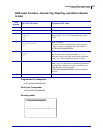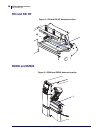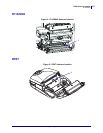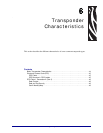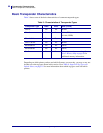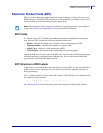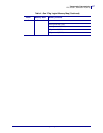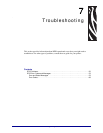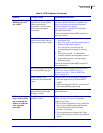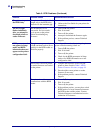
45
Transponder Characteristics
Electronic Product Code (EPC)
11/14/2008 RFID Programming Guide 58978L-008 Rev. A
Electronic Product Code (EPC)
EPC is a product numbering standard that can be used to identify a variety of items by using
RFID technology. The 96-bit EPC code links to an online database, providing a secure way of
sharing product-specific information along the supply chain.
EPC Fields
As with bar codes, EPC is divided into numbers that identify the manufacturer and product
type. However, EPC contains the following additional information:
• Header—identifies the length, type, structure, version, and generation of EPC
• Manager Number—identifies the company or company entity
• Object Class—similar to a stock keeping unit (SKU)
• Serial Number—the specific instance of the Object Class being tagged
Additional fields may be used as part of the EPC code to encode and decode information from
different numbering systems into human-readable form. For more information about EPC
specifications, refer to the EPC Global web site.
EPC Structure in RFID Labels
In the printer, you can subdivide transponder data into unique fields. You can customize these
fields to create “smart” labels that meet your needs or that meet the standards necessary in
EPC programming.
The
^RB ZPL command is used to define EPC structure. EPC field data can be delimited with
any of the following characters:
, ~ ! @ # $ % ^ & * | . < > / \ : ;
See ^RB on page 93 for more information about and examples for defining EPC structure.
Note • The information in this section is provided for your convenience only and is subject to
change. Go to http://www.epcglobalinc.org for the latest EPC information.



